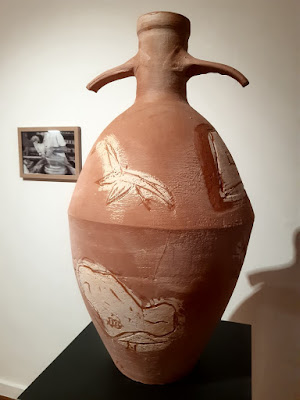My latest art piece hot off the work-bench in my studio is focused on this mid 19th century painting of the famous Queen of the Nile - Cleopatra - the artist is unknown ...
The image came out of an art book publish in 1920 belonging to a friend's ( Noela ) mother and had been sitting for some time amongst my pile of paper materials waiting for its turn ...Next, another friend ( Ali ) donated to me a box containing the parts of an old mantle clock belonging to her mother - fortunately all the parts were in good condition, though the unit had fallen apart over time ...
Carefully restoring the pieces back into a beautiful cabinet - the clock workings and dial have been put aside for another project - and adding the portrait of the ancient queen, plus a few extras, here is my artwork titled Cleopatra - the last pharaoh ( ... of ancient Egypt before it became a province of the Roman Empire ).Like many of my artworks, the piece has a door - in this case the door is another artwork of an intricate design etched into paper thin glass ..
The door opens to give us a glimpse of the Queen deep in thought - pondering her own fate after her lover - Mark Antony - had taken his own life ( and for more on their extraordinary life together, a good read can be found at Wikipedia - https://en.wikipedia.org/wiki/Cleopatra ).
The Queen is framed by gold leaves representing the wealth of the ruling class, and at her feet is a book telling the tale of her extraordinary life - chained into position in her tomb ...


























































